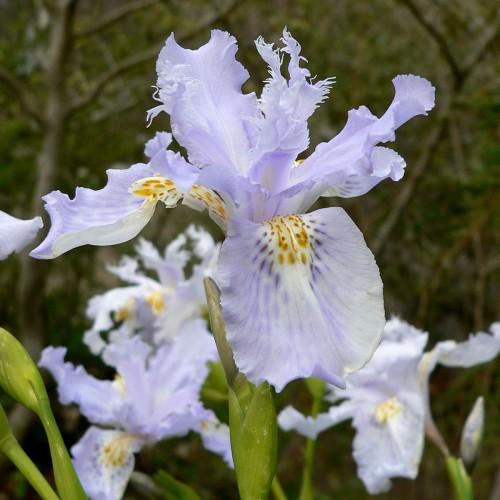
bamboo iris
Iris wattii
Cycle:
Herbaceous Perennial
Watering:
Average
Hardiness Zone:
8 - 10
Flowers:
Flowers
Sun:
Full sun,part shade
Leaf:
Yes
Growth Rate:
Low
Maintenance:
Low
Drought Tolerant:
Yes
Salt Tolerant:
Yes
Invasive:
Yes
Care Level:
Medium
watering
Bamboo iris (Iris wattii) requires an average amount of water for optimal growth and to keep looking attractive. It should be watered slightly but regularly, allowing the soil to become slightly dry between each watering. For seasonal climates with normal rainfall, a deep watering (about 1 inch) about once a week is sufficient. In hotter climates with less rainfall, it may need more frequent watering, or watering twice a week. Be careful, however, not to overwater, which can cause the plant to rot. Make sure the soil drains well and never let water collect in the pot or root rot will occur.
sunlight
Bamboo Iris plants (Iris wattii) require full sun to thrive and bloom in areas of high light intensity. The plants need around 4 hours of direct sunlight each day, preferably in the morning or early afternoon. This is especially important during the summer months, as the plant is not tolerant to high temperatures and humid conditions. Bamboo Iris will do best if given indirect or filtered sunlight in the hottest and most humid parts of the day. It is also important to provide protection from direct wind and rain.
pruning
Bamboo iris (Iris wattii) should be lightly pruned in late winter or early spring, before new growth begins. Pruning should include cutting back any canes that have died back, as well as removing any canes that are growing in an undesirable direction. When pruning, remove no more than 1-third of the cane’s height. By thinning out the canes, this will help to keep the plant looking tidy and encourage new, healthy growth. After the pruning is complete, it’s important to apply a balanced fertilizer to the soil to replenish any nutrients that were lost from the pruning.
